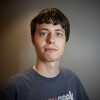On Aug. 29, coordinators of the Array of Things (AoT) project announced that they’ve set up two sensor nodes at intersections along Damen Avenue capable of collecting real-time data on things ranging from the amount of carbon monoxide in the air to the number of pedestrians crossing the street. They’re the first two nodes of an eventual 500 the project organizer hopes to have installed in the city by the end of 2018 — and that’s completely separate from the other cities working to set up their own nodes.
The aim is to expand the concept of the Internet of Things to make it more useful for cities. The Internet of Things now exists in the form of cellphones, tablets, certain kinds of connected vehicles and more — things that the government might not be able to access data from.
But put up an array of sensors around a city — public sensors that produce data anybody can see — and that city gains the ability to monitor itself in a more meaningful way. Argonne National Lab, one of the key players behind the project, described the AoT as a fitness tracker for Chicago.
In some ways, it is exactly that. Among the uses project organizers have proposed is mapping out air quality patterns around the city. If a person walks the same way to work every day, and suddenly finds out the air quality is better a block to the east, they might take that route instead.
And in some ways, the concept of fitness applies more to the ebb and flow of life in the city. Traffic data can help assess where transportation officials should focus their efforts. The ability to monitor standing water means the city could spot flooding much more quickly, and move to fix the problem or mitigate damages sooner. Over time, air quality measurements could be compared with public health records to examine the relationship between widespread societal problems and the environments in which they occur.
“It’s truly doing science in the city and out in the communities,” Chicago CIO Brenna Berman said in a statement. “We’ll be able to engage with community groups to help them make the data their own and figure out to use it to address the questions they have. You’re going to see community groups use this data to understand their communities and neighborhoods better as we all try to build a better life here in Chicago.”
Though the group is only testing and calibrating the sensors now, in the future they will start streaming data directly to Chicago’s open data portal, as well as Plenario, a tool that allows users to plot data sets side by side on a map.
It’s done using the concept of edge computing, which means that the nodes process data and transmit only raw information. Any images will be crunched down through object recognition into numbers before they go anywhere. That solves two problems at the same time — it pre-empts privacy concerns and it limits the amount of information that needs to be transmitted to the servers, making the process faster.
In the future, the AoT will expand outside Chicago. The team is already in talks with cities around the U.S. and the world to set up demonstrations.
“It’s about creating new streams of data that help us understand and address the most critical urban challenges,” said Charlie Catlett, senior computer scientist at Argonne National Laboratory and one of the driving forces behind the project.








